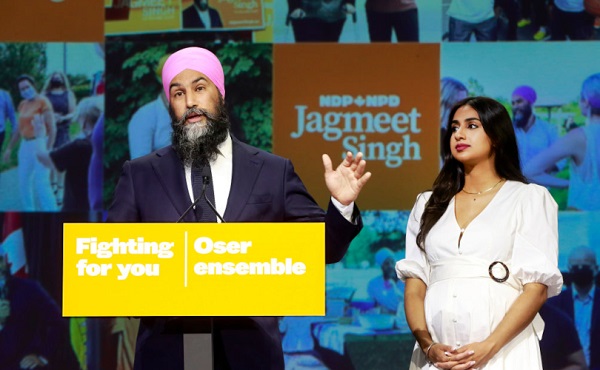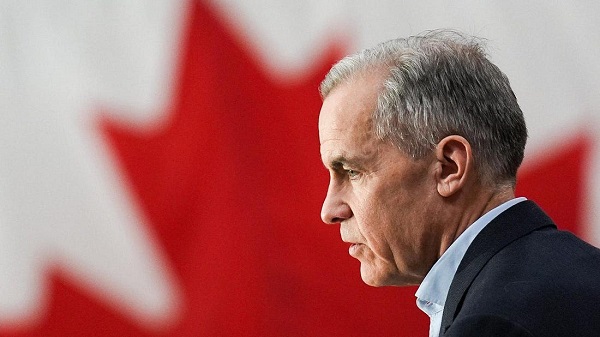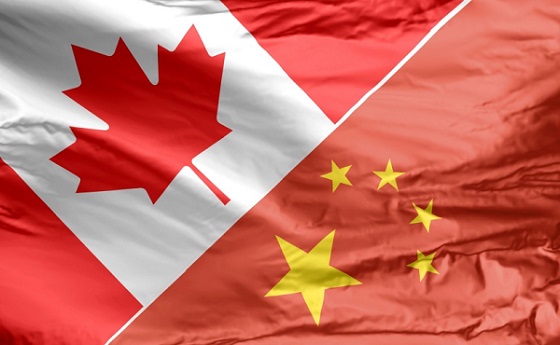National
NDP seemingly learns nothing from electoral collapse as the party sets identity goals for leadership race

From LifeSiteNews
The NDP’s collapse is no mystery: the party abandoned workers for identity quotas and woke virtue-signaling that Canadians overwhelmingly rejected.
In the April 2025 federal election, the New Democratic Party was nearly wiped from the Canadian electoral map. The NDP was reduced to seven parliamentary seats, five short of the 12 needed to gain official party status. NDP leader Jagmeet Singh, one of the worst politicians in recent memory, lost his own seat. The once-proud standard-bearer of Canadian Leftism was reduced to a mere 6 percent of the popular vote.
An autopsy of the NDP reveals any number of comorbidities. Justin Trudeau flanked them by pivoting hard to the Left under the Liberal banner. Singh desperately licked Trudeau’s boots and propped up his minority government for months, likely in a bid to pass the minimum threshold necessary to get his parliamentary pension. The Conservatives – to their own electoral detriment – relentlessly hammered Singh’s NDP, reducing vote-splitting on the Left.
But even interim NDP leader Don Davies admitted recently that his party’s obsession with woke identity politics has been an electoral millstone around the party’s figurative neck. In a recent podcast interview with TVO host Steve Paikin, Davies mused that the party’s priorities have drifted in recent years.
“I think what the NDP has to do is a really good navel-gazing,” he told Paikin. “Are we talking about the right issues that are affecting kitchen tables in Oshawa or Trois-Rivières or Kamloops? Are we really understanding what working people are going through? I’m looking forward to the discussion in our party to see if we can reorient ourselves so we can tell workers, ‘We get you; we’ve got policies that will make your lives better.’”
Of course, this is precisely what the activists who run the NDP do not wish to do. As the National Post noted, Davies “said he also recognizes that, at the same time, issues facing white, straight male workers are ‘not the same’ as issues facing a worker who is a lesbian and a woman of colour and the party should find a balance between reflecting those different interests.” The NDP once claimed to be the party of the working man, but there aren’t a lot of construction workers or oil riggers flocking to the party’s banner.
As it turns out, the NDP has learned nothing. Just days after Davies’ navel-gazing conversation with Paikin, the party announced the requirements for the upcoming leadership race to select Jagmeet Singh’s replacement. Candidates must collect 500 signatures from party members, with at least 50 from each of the country’s five regions – the Atlantic, Quebec, Ontario, the West, and the territories. But there’s more:
Rules indicate that at least 50 per cent of the total required signatures must be from NDP members who do not identify as a cisgender man – meaning a male whose reported gender corresponds to their reported sex at birth. The party also requires a minimum of 100 signatures be from “equity-seeking groups” such as racialized members, Indigenous members, members of the LGBTQ+ community and persons living with disabilities.
As the Post noted with magnificent understatement: “The party did not immediately respond when asked how officials would reasonably verify if members identified as cisgender men or as being part of ‘equity-seeking groups.’”
Indeed, how could they? With LGBT groups recognizing a minimum of 72 genders, what is to stop some aspiring leftist from adopting any number of identities? In Latin America, male political candidates – with straight faces and internal chortles – have adopted LGBT identities in order to qualify for just such quotas. Very few of these identities are actually known to the average Canadian, and virtually none of them are independently verifiable. They are, after all, about internal feelings – and these feelings are both unquestionable and sacred.
Don Davies, in other words, recognizes that without the “straight white working man” that the NDP once relied on, the party is doomed. A few days later, his party released requirements for new aspiring leaders mandating that at least half of the signups cannot be straight white males. They didn’t quite word it like that, but their intentions could not be more clearly conveyed – or more clearly heard.
After a series of debates that I am very much looking forward to, the NDP will vote for the new leader in March 2026 via ranked ballot. Currently, Edmonton MP Heather McPherson and leftist activists Yves Engler and Avi Lewis are expected to run.
Business
No Jobs Clause: Liberals Under Fire Over Stellantis Deal in Fiery Committee Showdown

It was less of an industrial strategy and more of a cultural manifesto wrapped in a subsidy package… clause after clause mandates social goals: The “50-30 Challenge” pushes for 50% women and 30% underrepresented groups on boards, with detailed reporting on diversity metrics… But job protections? Squishy at best.
Folks, here’s why every Canadian should be boiling mad: Just two years ago, on May 2, 2023, Justin Trudeau’s Liberals were all grins and photo ops, announcing a whopping $15 billion deal with Stellantis to build the NextStar EV battery plant in Windsor, Ontario. Trudeau himself called it a “historic agreement” that would “create thousands of well-paying jobs” and position Canada as a leader in electric vehicles. But fast-forward to October 14, 2025, and Stellantis pulls the plug on Brampton: They’re shifting production of the Jeep Compass from the Ontario plant to Belvidere, Illinois, citing “market conditions” exacerbated by Donald Trump’s reinstated 25% tariffs on Canadian-made vehicles. As Reuters reported on November 3, 2025, those tariffs—slapped on earlier this year—made it untenable to keep building in Canada for the U.S. market. Result? 3,000 workers laid off indefinitely, a facility idled since February 2024, and billions in taxpayer subsidies looking like a sucker punch. Stellantis isn’t even hiding it; their press release that day admitted the move was to “optimize operations” amid tariff pressures, investing $600 million in Illinois instead.
It’s a question that should make every Canadian furious, particularly anyone who still believes that the government’s role is to defend the nation’s workers rather than sell them out to foreign multinationals under the guise of “green investment.” The Trudeau government—with a lot of ribbon-cutting, back-patting, and press conference confetti—told us this was a generational opportunity. Up to $15 billion of taxpayer money was pledged through a combination of federal and Ontario subsidies, a massive, glittering pile of cash dumped at the feet of a foreign company to secure so-called “green jobs” in the electric vehicle sector. Split two-thirds federal and one-third provincial, it’s tied to production incentives—paid per kilowatt-hour as batteries roll out, not upfront, per the redacted contract leaked by CBC on October 29, 2025. But that didn’t stop the Liberals from hyping it as a slam-dunk for Canada’s economy.
At the time, Liberal ministers paraded through Windsor and Brampton with photographers in tow, declaring that the NextStar EV battery plant and a retooled Brampton assembly line would solidify Canada’s future in the EV revolution. The Strategic Innovation Fund was rolled out like a magic wand—promising prosperity, sustainability, and, of course, “equity.” Not just for jobs, but for gender representation, for racial diversity on corporate boards, for net-zero targets. It was less of an industrial strategy and more of a cultural manifesto wrapped in a subsidy package. As revealed in the CBC-leaked documents, clause after clause mandates social goals: The “50-30 Challenge” pushes for 50% women and 30% underrepresented groups on boards, with detailed reporting on diversity metrics. Climate commitments? Baked in, with net-zero benchmarks. But job protections? Squishy at best.
But now, Stellantis is pulling up stakes in Brampton. They’re shipping production of the Jeep Compass south—to Illinois. The line is shutting down. Three thousand jobs are gone, and Ottawa’s response? A letter. A procedural dispute-resolution letter sent to Stellantis lawyers on November 3, 2025, with the government now claiming the company broke a “binding agreement.” As Industry Minister Mélanie Joly told the parliamentary committee that day, “We will start the 30-day period of the formal dispute resolution process in order to bring back production at the Stellantis Brampton facility.” She added, “These actions are not symbolic. They’re the direct consequence of the violation of clear commitments.” The same government that only weeks ago was hailing this deal as a model for the future now admits it may not even contain an enforceable jobs guarantee. The language is vague. The numbers are redacted. The accountability? Nonexistent.
The Industry Minister, Mélanie Joly, faced her grilling on Parliament Hill during a meeting of the House of Commons Standing Committee on Industry and Technology (INDU)—that exposed just how hollow this whole deal really was. Conservative MPs, including Raquel Dancho and Michael Guglielmo, demanded to see the clause. Which clause did Stellantis allegedly violate? What exactly was the commitment to Brampton? How many jobs were actually guaranteed? Was there a number? Was it enforceable? The Minister couldn’t—or wouldn’t—say. She deflected, pointed to redacted documents, and, when pressed about why the contract was packed with detailed social engineering mandates on board diversity but lacked hard job protections, accused her critics of being “against women.”
You can’t make this up.
Raquel Dancho, hammering in the core question that everyone watching already knew the answer to, asked,
“Was it 3,000 jobs that that SIF agreement with Brampton guaranteed?”
The minister responded like a bureaucratic ghost, floating just above the substance of the question.
“There are job guarantees in all the different contracts,” she said, “but you absolutely need to make sure that you see not only the contract… but also its amendment.”
Translation: Trust us. It’s in there somewhere. You just can’t see it.
Dancho pushed again: Where’s the number? Where’s the clause? The minister replied, “Clearly it is about protecting jobs. It is also about the production at the Brampton facility.” Not a single figure. Not a single line reference. Just the usual empty affirmation: “We care.”
Dancho didn’t let up. She cut through the fluff with brutal clarity:
“Surely there should be an explicit Canada-wide jobs guarantee. But we’re splitting hairs here. You’ve been evasive about the numbers… I’m not sure if you understand the magnitude of the money that you’ve committed.”
Then came the math:
“Over 647,000 full-time, two-parent Canadian families had to work an entire year to provide the $11 billion your government handed over to Stellantis. And still, there’s no explicit jobs guarantee.”
And when Michael Guglielmo followed up with the most damning observation of all—why are the clearest commitments in this contract about gender and racial equity quotas, not Canadian jobs?—the minister didn’t even deny it. She shot back with the cheap and predictable counterpunch:
“Are you against women being on boards?”
This is what it’s come to.
Instead of defending Canadian workers, the minister defends ideological clauses. Instead of admitting they cut a $15 billion cheque without a locked-down jobs guarantee, they imply that questioning the deal is somehow anti-diversity. These people don’t just miss the point—they refuse to even stand in the same room as the point.
Because the priority wasn’t jobs. It was ideology. The contract’s most detailed provisions weren’t about keeping Canadians employed—they were about the “50-30 challenge,” ensuring that Stellantis boards hit quotas: 50% women or non-binary individuals, 30% racialized, LGBTQ+, Indigenous, or disabled. These were enforceable clauses. Meanwhile, the 3,000 Brampton workers whose plant just shut down got… vibes.
That’s not economic strategy. That’s social engineering masquerading as industrial policy.
And now, when the jobs are gone, when Brampton is shuttered, when the workers are packing up their toolboxes and wondering how they’re going to pay their mortgage, the Liberals say they’re “launching a dispute-resolution process.” They sent a letter. They held a press conference. The Prime Minister, not present. The Minister, ducking behind amendments and redactions. And Canadians are left asking the only question that matters: Did we just get played?
Yes. We did.
The Liberals want you to believe this is just the price of doing business in a green economy. That global supply chains shift. That the transition to EVs is complicated. That we must continue to “work together.” But that’s not leadership. That’s surrender. The truth is, this wasn’t an industrial strategy—it was a $15 billion act of political performance art. A press release dressed up as policy. A parade of woke checkboxes signed into law while real, blue-collar livelihoods were used as bait.
And now we’re paying for it—not just in tax dollars, but in lost paychecks, empty factories, and shattered trust.
This is what happens when your government governs with hashtags instead of handshakes. When they negotiate with ideology, not leverage. When they cut billion-dollar deals and forget to actually protect the people they claim to represent.
Stellantis didn’t betray Brampton. The Liberal government did.
If there was a real deal—an actual, enforceable agreement that tied billions in taxpayer money to thousands of Canadian jobs—we’d be hearing about it nonstop. The Liberals wouldn’t be hiding behind redactions, amendments, and vague references to “linked contracts.” They’d be shouting from every podium: Here’s the clause. Here’s the violation. Here’s the money we’re clawing back. But instead, what do we get?
We get, “You’ll find it.”
We get, “It’s in the amendment.”
We get, “It’s commercially sensitive.”
It’s a shell game. A bureaucratic sleight of hand. Because the truth is, if this government had locked in a rock-solid guarantee, they’d be waving it in your face. They’d be naming names and quoting line numbers. But they can’t. Because it doesn’t exist. Or worse, because they were too arrogant or incompetent to include it in the first place.
And frankly, I’m not surprised. We’ve come to expect this from a Liberal government that governs by photo op and backpedals by committee. But what this is really about—what this entire spectacle reveals—is not just incompetence. It’s the desperate attempt to hide that incompetence from their own base. To maintain the illusion that they’re builders of the future while the factories go dark behind them.
They knew what they were doing. They just didn’t care who paid for it.
Business
Carney government’s first budget should signal end to crippling ‘climate’ policies

From the Fraser Institute
The Carney government will table its long-awaited first budget tooday. The vote on the budget is expected to be a confidence vote, so the stakes are high. Everyone is speculating about what’s to be in it. CBC, the Toronto Sun and Global News are all reading the tea leaves. And I hate to miss a tea party.
The budget is, naturally, going to have major implications for Canada’s economic indicators of debt, deficit, spending, governmental expansion/contraction, and so on. I’ll leave all that macroeconomics to my colleagues at Fraser Institute. But Prime Minister Carney has made some specific claims in my areas of specialty (environment, natural resources and regulation), and has made noises about Canada becoming an “energy superpower” and “building things” again. He’s also, in speeches leading up to the budget, re-affirmed that the Trudeau-era climate-change-centric, carbon-emission-control mindset is unchanged. The wording has changed, but the focus and predicates remain. Now though, rather than pounding on terms such as carbon, greenhouse and climate change, it’s all about Canadian policy being “responsible,” “sustainable,” “moral” and “equitable.”
Here’s what I’ll look for in the budget.
First, will the government dismantle or reform bills C-48, C-69 and the oil and gas emission cap—the three-pronged trident of death for major oil and gas development in Canada? Without this, it will be difficult to take any of his talk of energy superpower or natural resource trade renaissance seriously.
Second, will the government renounce or seriously reform the economically irrational, unattainable and crippling “net-zero 2050” anti-carbon agenda and shift Canada’s climate policy from emissions abatement to something potentially more attainable, such as adaptation and resilience building? Will it free Canada’s carbon natural resource economy to be the engine of Canadian prosperity and international competitiveness once again? Or keep Canada’s carbon (oil and gas) economy (and manufacturing economy) on a path toward extinction?
Third, will the government reset the tone of Canadian culture and defuse some of the adversarial relations with resource-rich provinces by acknowledging that Canada’s natural-resource economy has been, is now and must continue to be a cornerstone in Canada’s total economy? Or will it stick to the “net-zero” extinction process for carbon emissions, which will also be an extinction process for anything that requires substantial energy generation, and for the development of natural resources as the primary wealth engine of Canada? Will the government end the disdain for the role of Canada (and notably some of Canada’s western provinces) as a natural-resources export economy?
The budget will offer a window into the mind of Prime Minister Carney on the matter of natural resources in Canada’s economy and society. With global changes undermining the international carbon control regime and idee fixe, and with an understanding that Canada is on an economic precipice, there’s an opportunity here. Let’s hope Carney works to unshackle one of Canada’s greatest engines of economic progress—its energy and natural resource production, transformation, transportation, consumption and exportation.
Canadians could use the boost in quality of life that Canada’s natural resources could bring to current and future generations.
-

 Crime2 days ago
Crime2 days agoPublic Execution of Anti-Cartel Mayor in Michoacán Prompts U.S. Offer to Intervene Against Cartels
-

 Environment2 days ago
Environment2 days agoThe era of Climate Change Alarmism is over
-

 Alberta23 hours ago
Alberta23 hours agoCanada’s heavy oil finds new fans as global demand rises
-

 Justice1 day ago
Justice1 day agoA Justice System That Hates Punishment Can’t Protect the Innocent
-

 Alberta2 hours ago
Alberta2 hours agoAlberta government’s plan will improve access to MRIs and CT scans
-

 Automotive23 hours ago
Automotive23 hours agoCanada’s EV experiment has FAILED
-

 Bruce Dowbiggin23 hours ago
Bruce Dowbiggin23 hours agoA Story So Good Not Even The Elbows Up Crew Could Ruin It
-

 Addictions22 hours ago
Addictions22 hours agoThe War on Commonsense Nicotine Regulation












